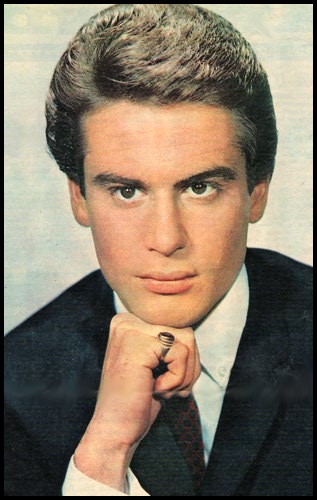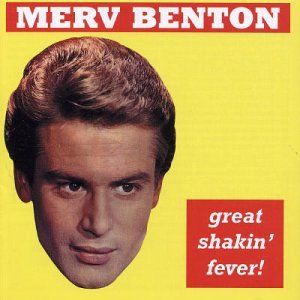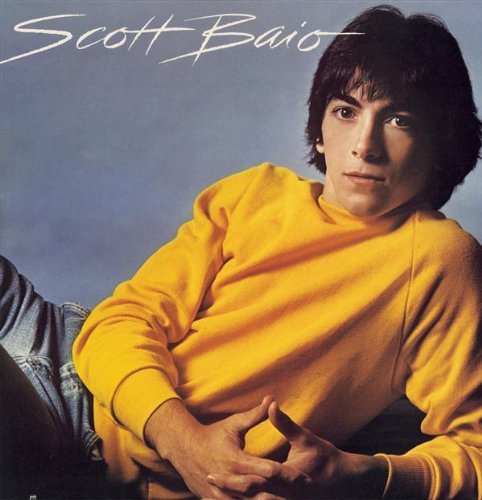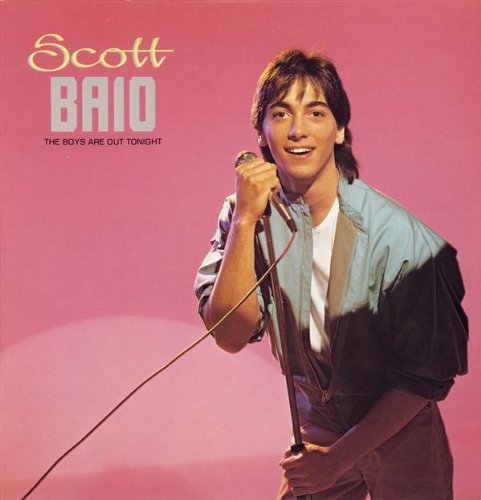The Lil' Hospital was so good.
I'm an unabashed lover of twee pop, and the Lil' Hospital delivered the goods. Adorable, naive, catchy, and obscure, Lil' Hospital embodied all of the best qualities of twee pop.
I met the guy behind Lil' Hospital, Kevin Alvir, at NYC Popfest in 2009 when he performed with his subsequent band, Knight School. Knight School was noisy, but Lil' Hospital was cute. I remember telling Kevin that Knight School should mix its vocals louder, like he did with the Lil' Hospital records. I like it when the vocals are way out in front.
That's Kevin in the middle of the photo above.
Kevin also started a band called the Hairs with Alex Naidus from the Pains of Being Pure at Heart. The Hairs have outlasted Knight School, but Naidus isn't in the group anymore.
At first, the Hairs were noisy like Knight School, but then something wonderful started to happen: every once in a while, the Hairs would sound just like Lil' Hospital! Like on their 2013 EP The Magic's Gone. A couple of those songs sound just like Lil' Hospital.
Mmm.... Lil' Hospital.
A short history of the "band":
Kevin is from Virginia, like GWAR, and moved around from Fairfax to Arlington to Philadelphia to New York, but Lil' Hospital was associated with the DC pop scene. Now he's in Brooklyn.
Active from 2000-2008, Lil' Hospital released three albums and three EPs, beginning with the self-released, home-recorded cassette Meet the Lil' Hospital. The band name was a reference to the Jonathan Richman/Modern Lovers song "Hospital."
I asked Kevin to relive his Lil' Hospital glory days with Music Weird, and he generously obliged. Here's the interview, from February 25, 2014.
Is my Lil' Hospital discography (below) missing any compilations or other releases?
I think that pretty much covers the Lil' Hospital discography. I think there have been some compilations that I was on that I cannot remember now.
How did you get the earliest Lil' Hospital recordings out there? Did you send demos to Popgun? Did you advertise or do mail-order for your self-released cassette? Did labels come to you or did you go to them?
The earliest Lil' Hospital recording is Meet the Lil' Hospital. I used to make tapes from my four-track cassette recorder to a tape deck. I would take that tape with the collection of songs and just run copies of it. Then I would make individual packaging for it and send
it around to people. Mainly friends in college, who I don't know if they really dug those twee jams. I was half ashamed, half pompous about it.
I went to the Athens Popfest of 2000, when that was the big thing. I met a lot of likeminded people that I'm sort of in touch with still. One of them was Chris Adolf of Bad Weather California and the Love Letter Band. He encouraged me to send my tape out to get released.
Raoul de la Cruz of Popgun Recordings responded when I sent him a demo. He really loved the songs but didn't like my production style. He told me to take off all the reverb. The songs were super slow and echoey like Galaxie 500. So I sent him a four-song EP, recorded with no reverb, called Me & My Beatbox. Which was a bit more rambunctious. And it came out on September 11, 2001.
As far as advertising, I would leave messages on message boards to come see about the Lil' Hospital. I would just send tapes to people in bands that I liked. Thankfully, they would give it a listen and I've been in touch with them for a long time too. But I never had a label
approach me for Lil' Hospital. That was just me emailing labels if they would put out something by me. I was just motivated to have albums and such. I am surprised that a lot of them were so accepting and I didn't have to beg.
The band was just you in the early days. When did you first perform as Lil' Hospital, and when did you put a band together for it? How many times did Lil' Hospital perform live?
I first performed as the Lil' Hospital during the winter of 2001 or 2002? I asked this friend named Dan if the Lil' Hospital could perform in his basement. And we kinda made a party for it. I had performed in high school doing open mics. But this was the first time I had something to stand behind and a tape to sell—that Me & My Beatbox tape. So I felt kinda legit. It was just me and my friend Niko on drums. On recordings I played with a Casio keyboard preset drum machine.
Gradually, we got our friend Lynne to play bass. She didn't really know how to play bass, so we kinda taught her. Then again, I didn't know how to play bass myself. Then I just kept adding people and sometimes people left. By the end of the Lil' Hospital, I was living in New York and I was playing with Mat and Frank of the band called Shumai. And then the Lil' Hospital kinda crumbled.
The Lil' Hospital played a ton I remember. I was from the Washington DC area and I was surprised we got to play so often. We were one of three bands at the time that was kinda poppy and fun. I think I counted the amount of shows a few years ago—I think we played over 100 shows? Some of them I did solo. There was a summer tour I did in 2002. I played, like, five shows across America. All of them were solo and in a different time zone. No one knew of me—and how could they? The internet was not what it is now. But I was excited that I could do it and that I actually did do it.
Lil' Hospital doesn't really sound like anyone else. Did you see yourself as being like any other bands?
Wow. That's a really nice compliment. On one hand, I was really influenced by certain bands at the time. I loved Of Montreal, Television Personalities, and the Aislers Set. I think I set out to sound a lot like them. But at the same time, if it sounded too much like any particular band, I would scrap it. I would hear the playback and just think, "Who the fuck is this poser?" I just tried to sound like myself, and I suppose that is hard to do. I think I might've tried to bend backwards, style-wise, in order to get the Elephant 6 crowd or the more twee-pop crowd or the indie-rock crowd. But overall, I just had to do what seemed right at the moment.
As for being like any other band, I wanted to have a style that was like that of Dan Treacy from Television Personalities or Kevin Barnes from Of Montreal. They had a certain voice. But I didn't want to do all the things that they did. I mean, the Lucksmiths were a super-popular indiepop band to be akin with, but at the same time, I knew I wasn't them either. I don't know if I can clearly answer this. It's like I wanted to be liked as much as other popular bands, but I couldn't live with myself doing something that seemed out of my own character
or capabilities.
What was the greatest or most surprising success that Lil' Hospital achieved?
Honestly, doing this interview feels like a great achievement. The Lil' Hospital has been dead for quite some time now. I always thought it went unheard, and it was really loved by a few twee pop fans out there around the world. I think the first time I was interviewed by the Washington DC Washington City Paper, I felt "achievement." But that went away. Ha!
I think opening for the Lucksmiths was cool. I think about the times that we played with other bands or for other people, and the mix of people really getting it versus the people that were like, "Uhhh.....well.....you guys seemed like you were having fun."
I don't know—I think I'm glad that the Lil' Hospital lasted as long as it did and that
people remember it. Oh, I also got a crushing review of Heavy Metal by some website. It was like, "This guy can't sing, can't write songs, and can't play instruments, so why does he even exist?" That bummed me out, but I just wanted to still do it. So I'm glad that I survived
that.
The video for "Big Sister in Hollywood" is a pretty lavish production. How did that come about?
"Big Sister in Hollywood" was filmed in a day or two in Philadelphia. My friend Jayme of Snow Fairies, et cetera, put together a DVD compilation of indiepop bands that would most likely not have a music video. That was called No Parachute. He set me up with his friend Rich Wexler. We discussed the idea over the phone and I agreed to everything. It was fun. I can't watch it, really. But it was a fun song and a fun video to make.
I love the recent Hairs EP The Magic's Gone because the title track sounds just like Lil' Hospital. A lot of your recent stuff with Knight School and the Hairs has been noisy, though. Have you lost your softness and innocence and become cynical and angry?
Have I lost my innocence? I suppose so. I think once you get to The Universe Sucks, which was at the end of the Lil' Hospital arc, I started going to therapy. I started realizing some things. I mean, I have some embarrassment in thinking about the Lil' Hospital now because I was a lot younger and naive. Sometimes I hear it and I think about how I was this closet-case gay guy that was terrified of himself and everyone else. I came from a pretty conservative town and family. I didn't think there was much hope for me to be accepted. So I just lost myself in music. I have come to terms with a lot of things and I think that's what I hear in doing the Hairs or Knight School. I think I still have my poppy side. But I think I've been trying to merge that with the actual person that I am. Before I got into making music, I mainly listened to Sonic Youth.
Discography
Meet the Lil' Hospital (Self-released, 2000; Rub-a-Dub Tape Club, 2004)
- Pet Rock / Muscles / Wish You Would / Grow to Be / Local Heroes / Gone Gone Gone / Namby Pamby / Hello America
Me & My Beatbox EP (Popgun, 2001)
- Always Buggin' / Pet Rock / In Your Room / Nambly Pambly
Pretty Kissin' (Popgun Recordings, 2003)
- Pretty Kissin' / London 1-2-3-4 / Young and Restless
I Wanna Be Well (Best Friends Records, 2003)
- Busybee / Summer Reading / Kampus & Katy / Muscles / Oh My Days / Pretty Kissin' / Don't Cry No Tears / It's a Mad, Mad World / Hugless / Casios Know / There Could Be Girlfriend
Hey! Where'd the Summer Go? (Humblebee HBR003, 2004)
Total Gaylord Records Presents Cwistmas Twee (Total Gaylord, 2004)
- Various artists. Includes Lil' Hospital's "Pretty Kissin'"
Total Gaylord Records Presents Cwistmas Twee (Total Gaylord, 2004)
- Various artists. Includes Lil' Hospital's "Dear Scrooge"
Heavy Metal (Total Gaylord, 2006)
- Heavy Metal / Why, Why, Why (The Means) / Big Sister in Hollywood / Hey Crow / The Floods / I'm a Little Hospital / His Magic Guitar / Lost the Night / Office Rock / Henry Linquist / With the Wolves / Fast Learners
The Universe Sucks (Hugpatch, 2008)
- Universe / Nothing Like a Car Crash // Kip Is a Dick / A Bug's Life / The T-Rex



















UE9s3wDc+nBRqQ!6ws9g~~60_35.JPG)



BR4KNnpU8!~~60_35.JPG)